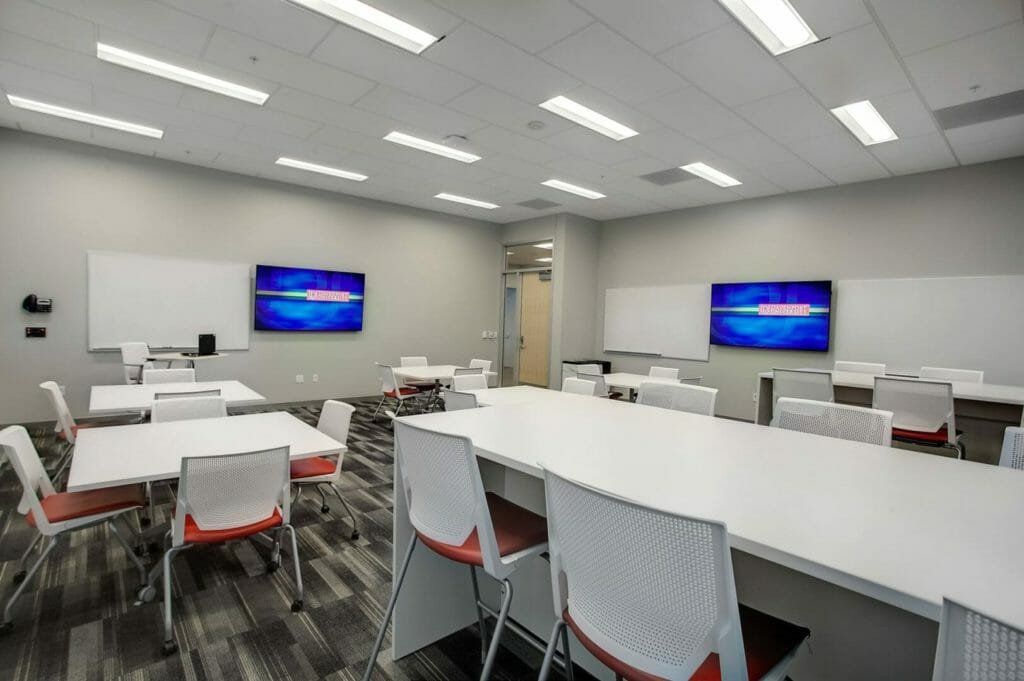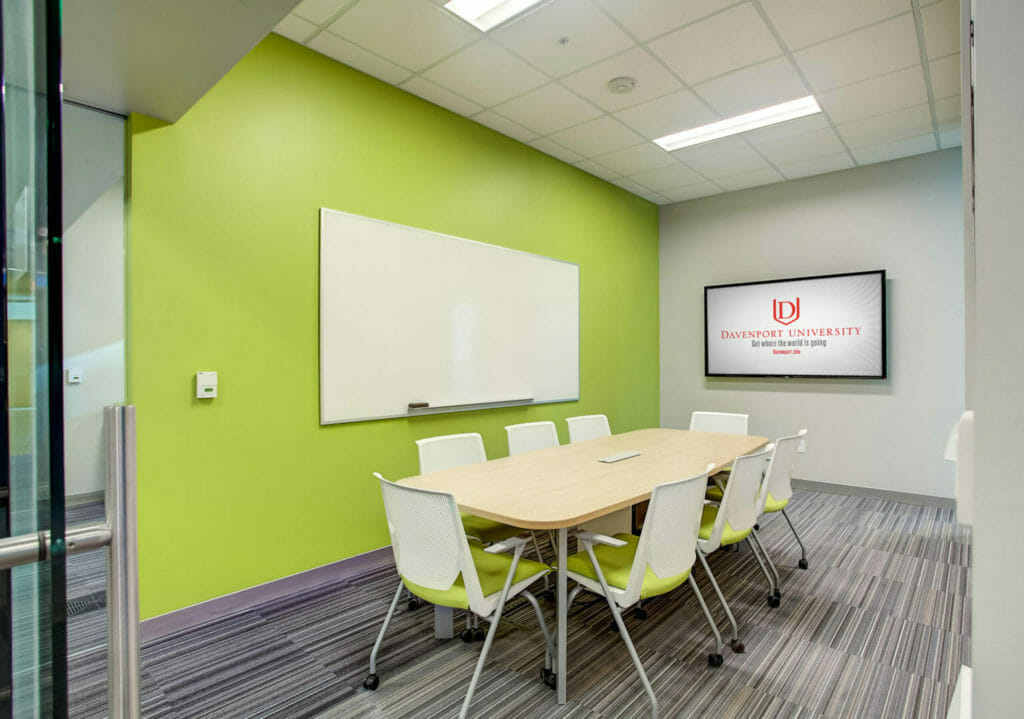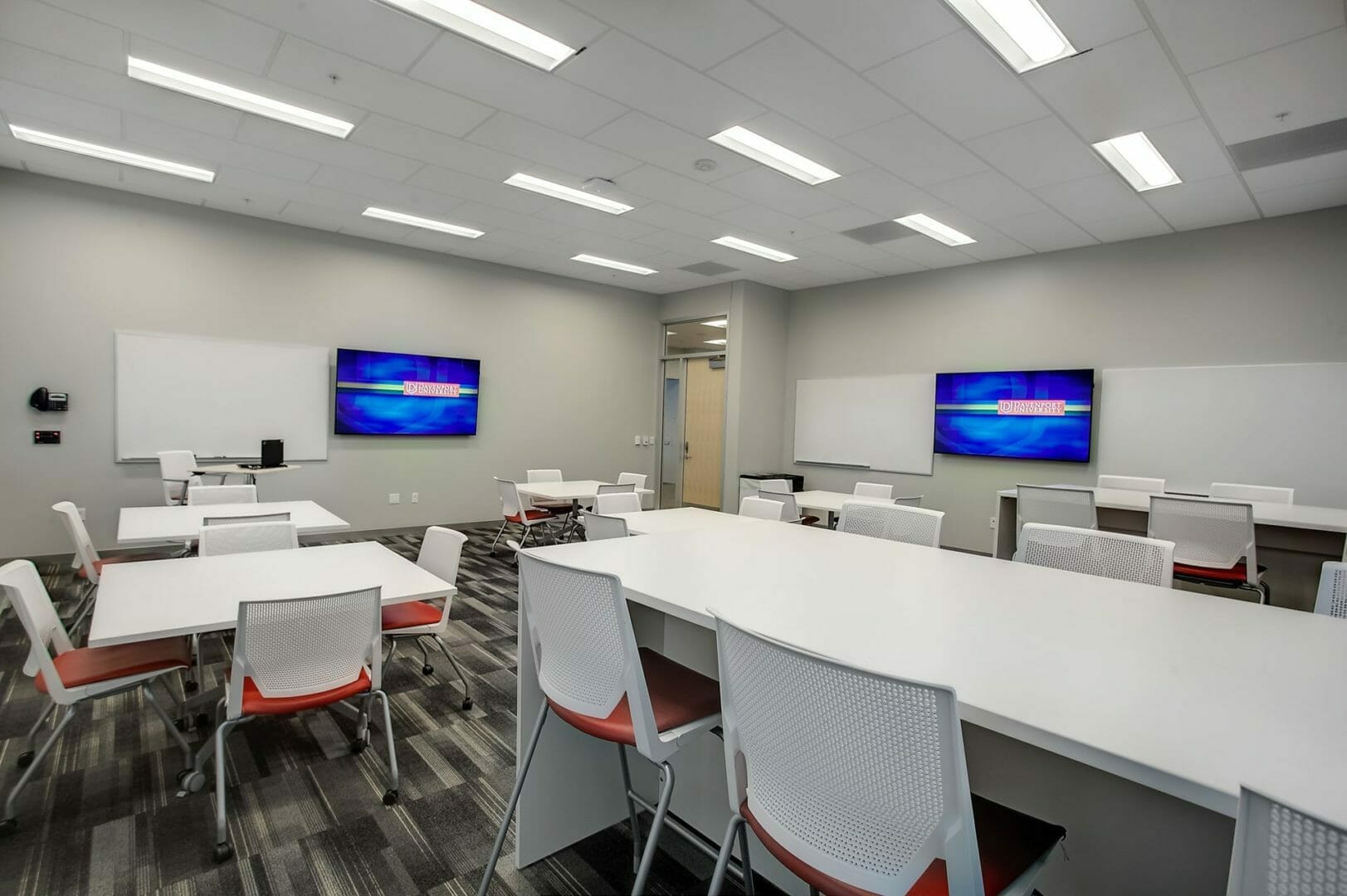When many schools and universities across the country initially closed their doors due to the Covid-19 pandemic, the traditional classroom as we know it was upended.
Universities quickly scrambled to get their classrooms up and running online to support students who would be transitioning to virtual learning, but they also were facing a myriad of other obstacles, such as resource constraints, unpredicted spending, and even concerns about enrollment as students and teachers alike wondered what was in store for the future.
However, as colleges and universities worked to transition their system from in-person to online, they found out quickly that to support hybrid learning or even socially distant in-person learning, many features of the classroom would need to be retooled to keep students and faculty safe, while also following any public health safety protocols put in place by the state or university. This also led to a huge weight being put on the IT function of these schools, as technology stepped into the spotlight as the main enabler of institutional success.
Thankfully, this new educational reliance on IT and AV for higher education did not go unnoticed, and the Higher Educational Emergency Relief Fund (HEERF) was included as part of the Coronavirus Aid, Relief, and Economic Security Act (CARES Act) that was passed by Congress and signed by President Donald Trump to provide fast and direct economic aid to both the American people and it’s institutions who were negatively impacted by the Covid-19 pandemic. Understanding how CARES funding works and what are the allowable expenditures by the federal government will strengthen your Coronavirus response plan.

What is HEERF for?
The HEERF fund, which was established and funded under the CARES Act, allows institutions to use up to 50% of the health emergency relief funds that they receive to cover costs “associated with significant changes to the delivery of instruction due to the coronavirus.”
While there are some caveats about what can be covered using received HEERF funds, a lot of the technology that colleges and universities quickly purchased, installed, and implemented to help drive their online learning programs can be covered.
“Institutions may use the funds for Recipient’s Institutional Costs to purchase equipment or software, pay for online licensing fees, or pay for internet service to enable students to transition to distance learning as such costs are associated with a significant change in the delivery of instruction due to the coronavirus,” the U.S. Department of Education states. The caveats that they include alongside this relief fund is that costs cannot include payment to contractors for the provision of pre-enrollment recruitment activities like marketing and advertising, endowments, or capital outlays associated with facilities related to athletics, sectarian instruction, or religious worship.

What Tech HEERF Grant Funding Covers?
So, what type of equipment, software, and technology can be purchased with coronavirus relief funds? The Department of Education specifies the following use cases in their frequently asked questions (FAQs) document:
Technology provided to students to enable virtual learning: If your college or university needs to purchase things like laptops, internet hotspots, streaming software, online licensing fees, broadband internet service, or any other kind of information technology equipment to help your students participate in distance learning as a result of the coronavirus, you can use the funds from HEERF to reimburse your university for these costs. “Additionally, institutions that purchased computers or other equipment to donate or provide to students on or after March 13, 2020, the date of the Proclamation of National Emergency, may reimburse themselves for such computers or other equipment from the funds for Recipient’s Institutional Costs,” the U.S Department of Education states.
Online Program Management systems: If your institution needs to use an Online Program Management (OPM) provider such as a distance learning platform, learning management system, online resources, or other support services, you can use the HEERF funds to pay a per-student fee to these third-part service providers, so long as these fees do not cover recruitment activities by OPM providers or any other contractor.
Technology installed in the classroom to enable virtual learning: If your college or university needs to make tech and AV improvements to your classrooms to facilitate online learning for students who were watching from home, you can use HEERF funds to reimburse or cover these installations. This includes video and audio equipment used to stream lessons online, computers used by teachers, software used to host online classrooms or lesson plans, internet, IT equipment, online licensing fees, and more.
Online Security: If your institution is required to purchase online security or technology to address safety and security gaps in remote learning, the HEERF funds can help fund the costs of these security systems.

Partner With Bluewater
If you are still uncertain about what kind of new technology you require to facilitate both short and long-term online learning amid the Coronavirus pandemic and need help ensuring that these purchases fit into the technology that is covered under the Higher Education Emergency Relief fund, Bluewater would love to help.
Our team has already helped several major universities set up their classrooms and facilities with everything they need to make audio calls to classmates, connect with faculty via video, and share content locally or with remote participants – all with HEERF and CARE Act funding in mind.
Learn more about the higher education technology offerings that we provide, including the installation of collaborative huddle/breakout rooms, tech-enabled classrooms and lecture halls, student lobbies and concourses, webinars, and more. Our team of Higher Ed technologists would love to help you upgrade your space and better connect your community, both during and post-pandemic. It’s not too late to improve your Covid-19 response plan by leveraging federal funding and grant programs. While the future is uncertain, preparedness measures are not.












